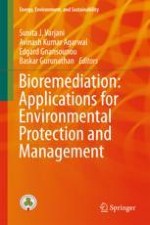2018 | OriginalPaper | Buchkapitel
12. Phytoremediation Techniques for the Removal of Dye in Wastewater
verfasst von : B. Bharathiraja, J. Jayamuthunagai, R. Praveenkumar, J. Iyyappan
Erschienen in: Bioremediation: Applications for Environmental Protection and Management
Verlag: Springer Singapore
Aktivieren Sie unsere intelligente Suche, um passende Fachinhalte oder Patente zu finden.
Wählen Sie Textabschnitte aus um mit Künstlicher Intelligenz passenden Patente zu finden. powered by
Markieren Sie Textabschnitte, um KI-gestützt weitere passende Inhalte zu finden. powered by
